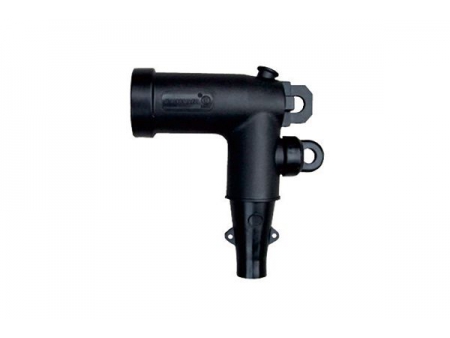Understanding Load Break Elbow Connectors: Enhancing Safety in Power Distribution

Load break elbow connectors are critical components in modern electrical distribution systems, offering a safe and efficient method for isolating circuits while they remain energized. These connectors are essential for the reliable operation of medium-voltage electrical networks, providing a secure means to manage power flow and protect both equipment and personnel.
In this article, we’ll explore the purpose, design, key features, and benefits of load break elbow connectors, as well as their vital role in enhancing safety within power distribution systems.
What Are Load Break Elbow Connectors?
A load break elbow connector is an electrical connector specifically designed for medium-voltage systems, typically operating between 5 kV and 35 kV. These connectors allow for the interruption of electrical power under load, meaning they can safely disconnect an energized circuit without causing harm or damage. The elbow shape of the connector facilitates easy installation and maintenance, as well as a secure connection between cables, transformers, and other distribution components.
Load break elbow connectors are commonly used in power distribution networks, particularly in outdoor settings like substations and industrial facilities, where they help isolate faults and enable maintenance without the need for de-energizing entire systems.
Key Features of Load Break Elbow Connectors
1. Safe Load Interruption
One of the primary functions of load break elbow connectors is to enable safe circuit interruption while the system remains under load. This means that operators can disconnect power from specific sections of the network for maintenance or fault isolation without having to shut down the entire distribution system. The connectors are designed to minimize the risk of electrical arcing, ensuring a controlled break during the disconnection process.
2. Robust Insulation
Load break elbow connectors are equipped with high-quality insulation materials such as rubber or silicone, which protect against environmental hazards, moisture, and contaminants. The insulation provides an additional layer of safety, preventing electrical faults and ensuring reliable performance even in harsh conditions.
3. Compact and Efficient Design
The compact design of load break elbow connectors allows them to fit in tight spaces, making them ideal for use in installations where space is limited. Their elbow-shaped configuration ensures a secure connection while reducing the overall footprint of the equipment, which is particularly beneficial in densely packed power distribution systems.
4. Easy Installation and Maintenance
Load break elbow connectors are designed for ease of installation and maintenance. Their user-friendly design allows electrical engineers to quickly and safely connect or disconnect cables, transformers, and switches, reducing downtime and enhancing system reliability. The connectors require minimal maintenance, contributing to their long service life.
5. Safety Locking Mechanism
Many load break elbow connectors feature an integrated safety locking mechanism to prevent accidental disconnections. This feature ensures that the connection is securely locked in place before the system can be energized, reducing the risk of electrical accidents.
6. Compatibility with Various Cable Sizes
Load break elbow connectors are versatile and compatible with a wide range of cable sizes and types, allowing for flexibility in electrical network design. This makes them ideal for various applications, from residential to industrial systems.
Applications of Load Break Elbow Connectors
1. Medium-Voltage Distribution Networks
Load break elbow connectors are primarily used in medium-voltage power distribution systems. These networks typically operate between 5 kV and 35 kV and are crucial for distributing electricity from substations to various parts of a city or industrial site. The connectors allow for the isolation of circuits, making it easier to manage faults or perform maintenance without affecting the entire network.
2. Substations
In substations, load break elbow connectors play an essential role in connecting transformers and switchgear to the distribution network. By providing a safe and efficient means of disconnecting power, these connectors ensure that substations can be serviced or repaired without de-energizing the entire system.
3. Industrial and Commercial Applications
Industries and commercial facilities that rely on uninterrupted power supply benefit from the use of load break elbow connectors. These connectors allow for safe and efficient maintenance of electrical systems, ensuring that critical processes or operations are not disrupted. They are commonly found in manufacturing plants, data centers, and large commercial buildings.
4. Renewable Energy Systems
As renewable energy generation continues to grow, load break elbow connectors are increasingly used in solar and wind farms. These connectors allow for easy integration into power distribution systems, helping to manage the flow of electricity from renewable sources to the grid. They also provide a means of disconnecting power safely during maintenance or in case of a fault.
5. Emergency Backup Systems
In emergency backup power systems, such as those found in hospitals or emergency response facilities, load break elbow connectors are used to ensure reliable power flow. They allow for the safe switching between primary and backup power sources, providing a seamless transition during power outages.
Benefits of Load Break Elbow Connectors
1. Enhanced Safety
Load break elbow connectors significantly improve safety by enabling the disconnection of electrical circuits under load without creating hazardous conditions. This helps prevent electrical arcs, which can lead to equipment damage or personnel injuries. The safety features, including locking mechanisms, further reduce the risk of accidents during operation and maintenance.
2. Increased System Reliability
The ability to isolate specific sections of a power distribution network for maintenance or fault isolation without shutting down the entire system enhances the overall reliability of the electrical grid. Load break elbow connectors make it possible to conduct repairs or replace components while minimizing system downtime.
3. Cost-Effective Solution
Although the upfront cost of load break elbow connectors may be higher than that of conventional connectors, their long-lasting durability and minimal maintenance requirements make them a cost-effective solution in the long run. Their ability to safely isolate circuits reduces the need for costly system-wide shutdowns, ultimately saving time and money.
4. Versatility and Flexibility
The compatibility of load break elbow connectors with various cable types and sizes makes them highly versatile. Their use in a wide range of applications, from substations to renewable energy systems, demonstrates their adaptability in different environments.
5. Reduced Maintenance Downtime
By allowing for safe disconnection and maintenance, load break elbow connectors help minimize the downtime of electrical systems. This is especially beneficial in critical infrastructure, where power outages can have significant consequences. With these connectors, maintenance can be performed without disrupting the entire power supply.
Conclusion
Load break elbow connectors are indispensable in modern power distribution systems, enhancing both safety and reliability. Their ability to safely interrupt electrical loads while under full operation is crucial in ensuring that electrical networks can be maintained and repaired without the need for system-wide shutdowns. By providing a secure and efficient means of disconnecting power, these connectors play a vital role in the smooth operation of medium-voltage systems.
Whether used in substations, industrial settings, or renewable energy farms, load break elbow connectors ensure that electrical systems remain safe, reliable, and efficient. Their design, versatility, and safety features make them an essential tool for any electrical infrastructure, helping to protect both personnel and equipment from the risks associated with electrical faults.




